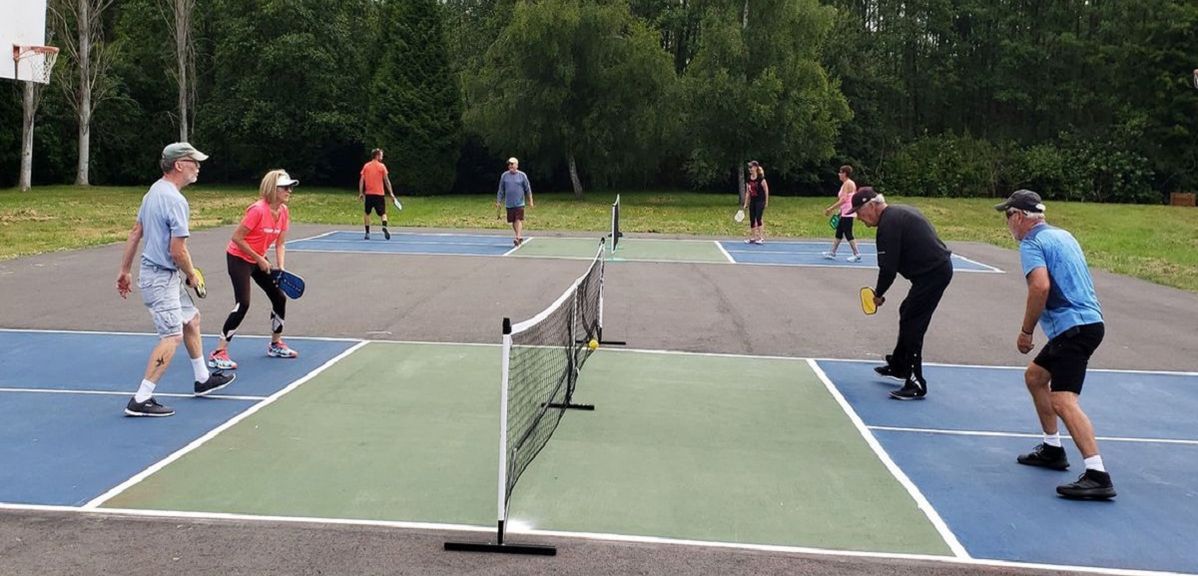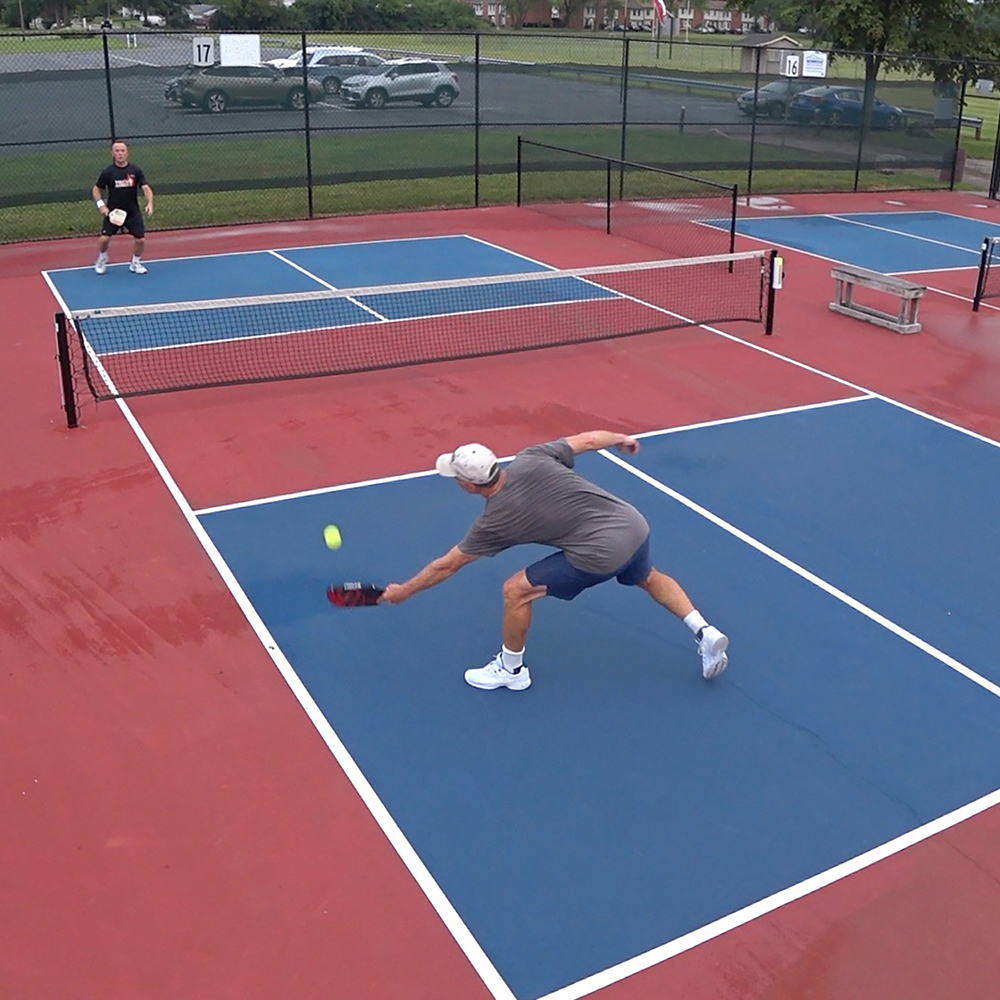Comprehending the Timeline for Your Pickleball Court Construction Project
From Style to Complete: Your Guide to Building a Pickleball Court
Developing a pickleball court is a complex project that needs a strategic approach, starting with the selection of an optimal place that balances accessibility and involvement. The layout stage is crucial, as it includes sticking to official court dimensions while considering outside elements such as sunlight and sound. Product selection also plays a significant duty in making sure the court's toughness and performance. As we discover the crucial steps in this process, you'll find what it takes to change a concept right into a completely useful facility that satisfies the needs of its gamers.
Selecting the Right Place
When planning to develop a pickleball court, it is important to constantly think about the location, as it plays an essential duty in the general performance and pleasure of the center. Picking a site that is conveniently obtainable improves involvement, making sure that players can comfortably reach the court without substantial traveling barriers (Pickleball court construction). Additionally, distance to residential locations, parks, or recreation center can cultivate a sense of area engagement and boost use
The terrain is another essential aspect; a flat, well-drained area reduces upkeep issues and offers a secure having fun surface. Preventing areas prone to flooding or too much wind will certainly also boost the having fun experience. Think about the sun's course throughout the day; positioning the court to decrease glare can substantially improve exposure for players.
Sound levels need to be evaluated, as situating the court near high-traffic roads or loud environments may interfere with the playing experience. Zoning authorizations and laws should be evaluated to guarantee compliance with regional regulations. By thoroughly assessing these aspects, one can secure a location that not just fulfills functional demands however additionally boosts the general satisfaction of pickleball.

Creating Your Court Design
After choosing a proper place for your pickleball court, the following action includes making a reliable court layout that takes full advantage of functionality and gamer experience. Begin by adhering to the official measurements established forth by the United States Pickleball Organization, which dictate a court size of 20 feet vast by 44 feet long for both singles and doubles play.

Following, position the court to minimize sunlight glare, ideally straightening it north-south, which assists preserve visibility throughout video games. Take note of accessibility, ensuring paths for players, spectators, and upkeep equipment.
If your style includes multiple courts, space them properly to reduce noise and disturbance throughout play, while likewise permitting for spectator areas. Lastly, include assigned locations for seats, storage, and services such as hydration terminals. Thoughtful planning of these elements will certainly develop a welcoming and functional setting for gamers of all skill degrees.
Picking Materials and Surfaces
How can the best option of surface areas and materials improve the gameplay experience on your pickleball court? Picking proper materials and surface areas is crucial for ideal efficiency, safety and security, and durability of your court. The most frequently made use of surface areas consist of asphalt, concrete, and specialized sporting activities floor tiles, each offering unique advantages.
Asphalt supplies a cost-efficient choice, supplying a smooth surface area that enables excellent round bounce and grip. Concrete, while much more pricey, provides resilience and very little upkeep, making it appropriate for high-traffic locations. For those looking for innovative performance, specialized sporting activities tiles are readily available in various colors and structures, created particularly for pickleball. These tiles supply superb grasp and cushioning, lowering the threat of injury.
Moreover, think about the effect of surface color and texture on exposure and gameplay. Brightly tinted surfaces improve sphere visibility, while distinctive surface areas can help regulate the speed of the sphere, accommodating diverse playing designs. Ultimately, the selection of surfaces and products must line up with your budget, wanted aesthetic appeals, and the level of play you want to accommodate, making certain a quality experience for all gamers.
Building Steps to Adhere To
Embarking on the building and construction of a pickleball court calls for cautious planning and implementation to guarantee a high-quality having fun surface. Begin by marking the measurements of the court, which gauges 20 feet by 44 feet for doubles play. Dig deep into the location to a deepness of about 4 to 6 inches, guaranteeing proper drainage and a level structure.
Following, mount a steady base utilizing crushed stone or crushed rock, condensing it extensively to create a solid see here now foundation. As soon as the base is established, use a concrete piece, guaranteeing it is at the very least 4 inches thick. Smooth the surface for ideal playability, enabling it to treat for the suggested time, usually around 28 days.

Final Touches and Maintenance
Finishing the building and construction of a pickleball court includes vital last touches and continuous upkeep to make sure long life and optimum efficiency. Ensure that the surface is properly healed and free of debris. A detailed cleaning removes dirt, dust, or any kind of products that could impact gameplay. In addition, use a top notch court covering to boost traction and protect versus wear.
Next, inspect the internet and articles for proper placement and tension. A well-maintained web is essential for fair play, so changes may be essential after initial usage. Install border lines using sturdy, weather-resistant paint to preserve presence over time.
Normal maintenance is crucial to protecting your court (Pickleball court construction). Schedule regular assessments to look for surface fractures, fading lines, or drainage problems. useful content Trigger repair services will certainly protect against small concerns from intensifying into significant problems
Verdict
In recap, the effective building of a pickleball court entails a methodical strategy, starting with the selection of an appropriate area and careful style of the court format. The choice of materials significantly affects the court's toughness and efficiency, while adherence to established construction actions ensures top quality execution. Ultimately, consistent upkeep and the application of premium coatings are crucial for maintaining the court's condition, thus supplying an optimum having fun experience for all participants.
How can the right selection of products and surfaces boost the gameplay experience on your pickleball court?Getting started on the construction of a pickleball court calls for mindful planning and implementation to guarantee a top quality having fun surface.After healing, navigate to these guys repaint the court lines utilizing top quality, outdoor-grade paint, sticking to the main measurements for pickleball courts.Completing the building of a pickleball court involves crucial last touches and continuous upkeep to guarantee longevity and ideal efficiency.In summary, the successful building and construction of a pickleball court entails an organized approach, beginning with the selection of an ideal area and mindful design of the court design.